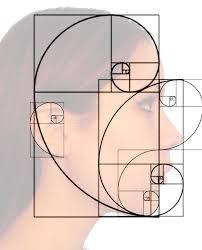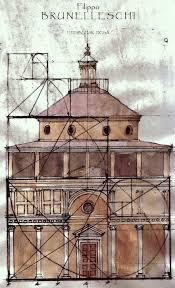



While pursuing architecture, as students, we heard a lot about ‘Golden Ratio’. We used to be in awe of those historical buildings which were constructed on the principle of Golden Ratio and were termed as perfect buildings. Be it ‘The Great Pyramid of Giza’, ‘Taj Mahal’ or ‘Parthenon’, some of us would wonder what we should do to design a perfect building. Maybe some students had grasped the concept and its application in architecture, at least I had not.
For me, this non clarity continued till I stumbled upon Fibonacci Sequence. Before we relate Fibonacci Sequence, Golden Ratio and Architecture to each other, let us first understand what Golden Ratio and Fibonacci Sequence are.
Golden Ratio is 1.618 which many architects and artists believe creates harmonious and visually pleasing composition and is usually written as the Greek letter Phi. How to find the Golden Ratio! Divide a line into two parts, a longer part (a) and a shorter part (b). Then, divide the longer part by the shorter part, and also divide the entire length (a + b) by (a). Both of these calculations should equal 1.618.
(a + b)/a = a/b = 1.618.
This ratio is considered the epitome of aesthetic balance and has been used by artists, architects, and designers for centuries to create compositions that are visually harmonious.
The Fibonacci sequence refers to a series of numbers wherein each number is the sum of the preceding two numbers appearing in the sequence. starting from 0 and 1. So, the sequence goes: 0, 1, 1, 2, 3, 5, 8, 13, 21, and so on.
While it is explicitly a mathematical concept, it is widely used in architecture as well to establish a sense of proportion and visual harmony
RELATION BETWEEN GOLDEN RATIO AND FIBONACCI SEQUENCE
Fibonacci is the Golden Ratio in disguise While Fibonacci Sequence might seem unrelated to the Golden Ratio at first glance, the connection becomes evident when we examine the ratio between successive Fibonacci numbers.
The Golden Ratio is a relationship between two numbers that are next to each other in the Fibonacci sequence. As we progress through the Fibonacci sequence, the ratio of consecutive Fibonacci numbers (i.e., 3/2, 5/3, 8/5, etc.) increasingly approximates the Golden Ratio. As the numbers grow larger, this ratio converges to φ, revealing the deep mathematical relationship between the two. This is such an easy way to get proportions for Golden Ratio.
RELATION BETWEEN GOLDEN RATIO, FIBONACCI SEQUENCE AND ARCHITECTURE
Golden Ratio and the Fibonacci sequence, two mathematical concepts that have profoundly influenced architecture throughout history. These concepts, have inspired architects to create structures that are not only aesthetically pleasing but also resonant with the inherent harmony of the universe.
The Fibonacci sequence is used in architecture to obtain specific types of designs that appear harmonious and visually pleasing. Here are the uses of this sequence in architecture:
Proportional harmony
Architects use the mathematical proportions fixed by the Fibonacci sequence to determine the proportion of elements of the structure being constructed. These elements include height and width of doors, windows and facades. The Fibonacci sequence helps in obtaining harmonious proportions for these elements.
Form and function integration
The spiral pattern derived from the Fibonacci sequence has been an inspiration for a lot of architects. These patterns can be used in designs that imitate the organic and naturally occurring designs in nature even if they do not explicitly follow the sequence in precise mathematical terms.
Biophilic design
The Fibonacci sequence is associated with patterns found in nature, such as the arrangement of leaves, petals and sea shells. Enthusiasts of biophilic design, that aims to incorporate these ecological elements, can draw on this sequence for reference to establish a link with the natural world.
Parametric design
The exploration of parametric design has been made easier with modern technologies that enable architects to access complex geometries and mathematical relationships more conveniently than before. The sequence can be used as a basis for such design algorithms that promote harmony in intricate forms.
Sustainable design
The patterns derived from the sequence design a layout of structures in a way that optimises energy use, ventilation and lighting. Therefore, more and more architects are showing their interest in this pattern for efficient and sustainable infrastructure design.
Facade design and ornamentation
Architects use the proportions of the sequence to create a rhythm and balance in the external appearance of buildings. As a result, the sequence is widely used in the designing of ornamental elements of structures, such as facades, windows and similar architectural details.
Following are some fine architecture examples of these mathematical concepts, both in ancient times and the modern era.
- Ancient Architecture: The Birthplace of Harmony
The Parthenon: One of the most famous examples of the Golden Ratio in ancient architecture is the Parthenon in Athens, Greece. The façade of the Parthenon is said to embody the Golden Ratio in its proportions, creating a sense of harmony and balance that has captivated viewers for millennia. The relationship between the height of the building, the width, and the placement of the columns are believed to reflect the Golden Ratio.
Pyramids of Giza: The Great Pyramid of Giza, another ancient marvel, is often cited as an example of the Golden Ratio in architecture. The ratio of the slant height of the pyramid to half the base is close to φ, demonstrating the ancient Egyptians’ intuitive understanding of this principle.
- Renaissance Architecture: Rediscovering Classical Ideals
Leonardo da Vinci’s Vitruvian Man: During the Renaissance, the study of proportion and harmony in architecture was revitalized, with the Golden Ratio playing a central role. Leonardo da Vinci’s famous drawing, the Vitruvian Man, is often associated with the Golden Ratio. This work reflects the Renaissance belief that the proportions of the human body are a microcosm of the universe and that these proportions, governed by the Golden Ratio, should form architectural design.
St. Peter’s Basilica: The design of St. Peter’s Basilica in Vatican City incorporates the Golden Ratio, especially in its façade and dome. The use of this ratio contributes to the building’s aesthetic appeal and proportion, aligning with Renaissance ideals of beauty and symmetry.
- Modern Architecture: The Golden Ratio in the Age of Innovation
Le Corbusier’s Modular: In the 20th century, the architect Le Corbusier developed a system of proportions based on the Golden Ratio, which he called the “Modulor.” This system was intended to bring human scale to architecture, using the Golden Ratio and Fibonacci sequence to determine the dimensions of spaces and building components. Le Corbusier’s designs, including the famous Unité d’Habitation in Marseille, reflect this approach, aiming for harmony between human proportions and the built environment.
The United Nations Headquarters: The UN Headquarters in New York, designed by a team of architects including Le Corbusier, also incorporates the Golden Ratio in its proportions. The dimensions of the Secretariat Building, for example, are said to reflect the principles of the Golden Ratio, contributing to its striking aesthetic.
- Nature-Inspired Architecture: Biomimicry and the Fibonacci Sequence
The Eden Project: The Eden Project in Cornwall, UK, features geodesic domes that mimic natural forms, with structures that evoke the spirals found in the Fibonacci sequence. This design not only creates a visually stunning complex but also reflects the underlying mathematical principles that govern natural forms.
The Gherkin in London: Another example is the Gherkin building in London, whose spiral design echoes the Fibonacci sequence. The building’s shape is not only aesthetically pleasing but also functionally efficient, reducing wind load and creating a more sustainable structure.
The Timeless Appeal of the Golden Ratio and Fibonacci Sequence
The enduring appeal of the Golden Ratio and Fibonacci sequence in architecture lies in their ability to create designs that feel intuitively “right.” These mathematical principles, resonate deeply with the human psyche, evoking a sense of balance, harmony, and beauty.
Architects across the ages have recognized that structures based on these principles not only stand the test of time but also continue to inspire awe and wonder. From the ancient pyramids to modern skyscrapers, the Golden Ratio and Fibonacci sequence have provided a foundation for architectural innovation.
In conclusion, the relationship between the Golden Ratio, the Fibonacci sequence, and architecture is a testament to the deep connection between mathematics and art. As we continue to explore new frontiers in architecture, these ancient mathematical concepts will undoubtedly remain a guiding force, inspiring designs that are both innovative and timeless.
Data collection: Internet

I have been surfing online more than 3 hours today yet I never found any interesting article like yours It is pretty worth enough for me In my opinion if all web owners and bloggers made good content as you did the web will be much more useful than ever before
Isla Moon You’re so awesome! I don’t believe I have read a single thing like that before. So great to find someone with some original thoughts on this topic. Really.. thank you for starting this up. This website is something that is needed on the internet, someone with a little originality!
Noodlemagazine I like the efforts you have put in this, regards for all the great content.